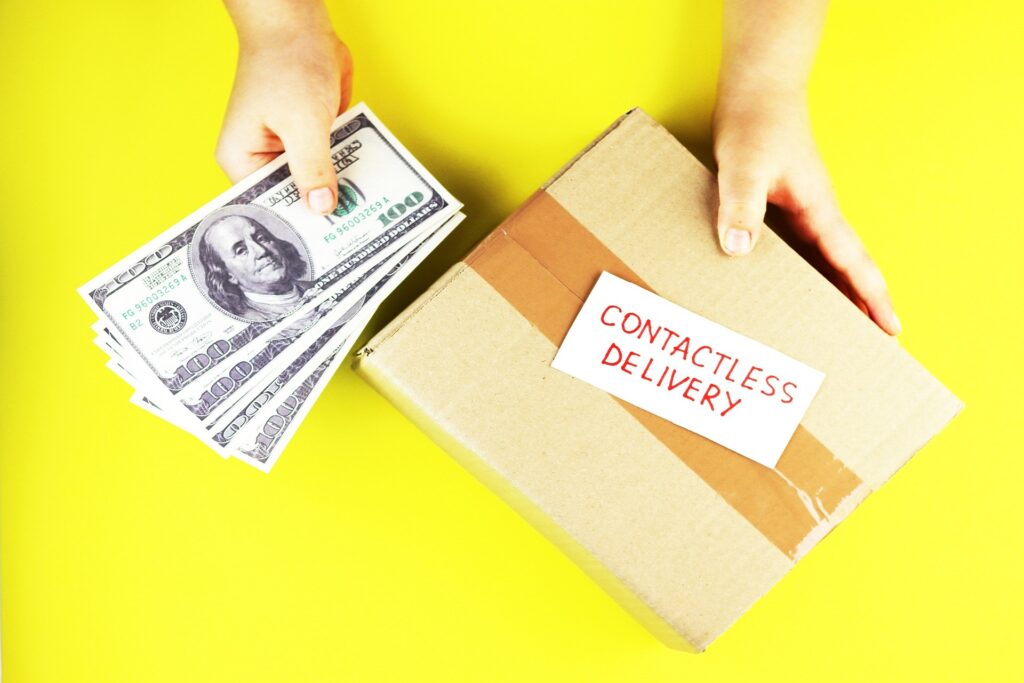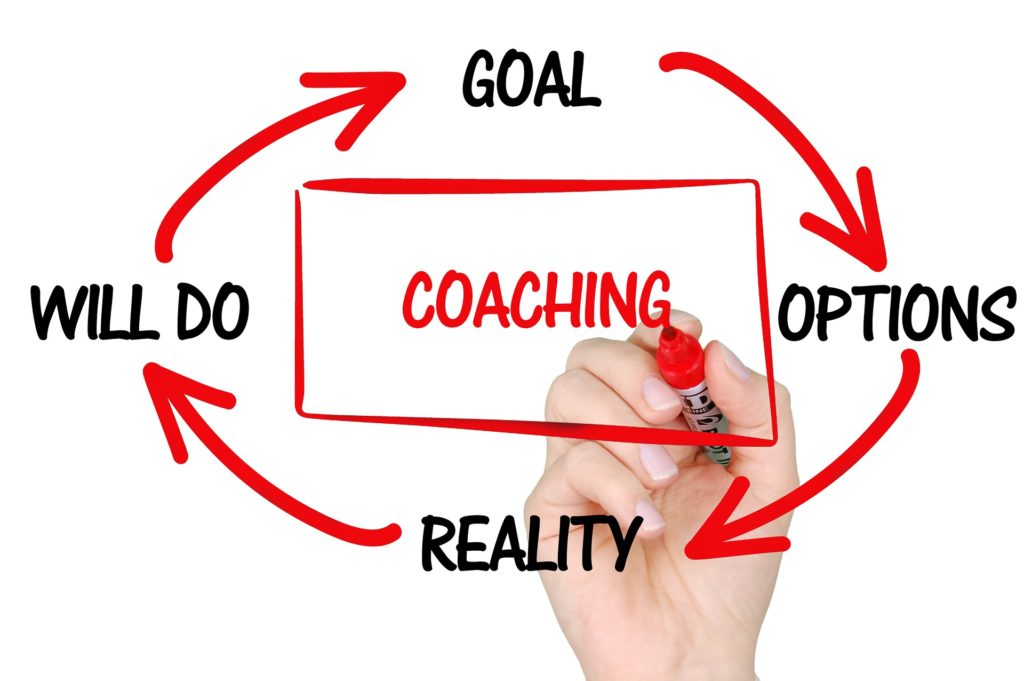Henry Ford said ‘The only foundation of real business is service’. In many companies, the customer service function sits outside of the sales channel as it is seen in some way inferior to sales. Yet customer service is integral to sales success. Without good customer service there will be no repeat sales, and repeat sales are the most profitable revenue any company can generate.
The selling process is not complete merely because the customer has stated that he or she will buy your products or services. Throughout the entire selling process, the maintenance of goodwill is important, but even more so after the purchase. Regardless of your customer’s previous feeling towards your company, the experience they have after they have bought will have a significant impact on future sales. Customer service doesn’t complete the sale; it reignites the sales cycle. A worthwhile maxim to adopt is: ‘a customer cannot be regarded as satisfied until we get their next order.’
Whilst customer service represents the last element in many standard sales processes it could also be argued that it is the first element in a recurring sales process. Ask yourself:
- Did I ensure that the agreements reached with the customer actually happened?
- Did I attempt to up-sell?
- Did I ask for a referral?
- What records are kept and maintained?
- What feedback did I get about how the customer benefited from my product/ service?
- How could customer service be improved?
Why Is Customer Service Important?
There are a number of empirical studies on the value of customer service and the effect of repeat business on the bottom line. Frederick Reicheld and Earl Sasser said that ‘if companies knew how much it really costs to lose a customer, they would be able to make accurate evaluations of investments designed to retain customers’. They found that customers become more profitable over time as increased sales; reduced costs of distribution; referrals; and the opportunity to up-sell all add to the bottom line.
Heskett, Sasser, and Scheslinger collaborated on a training programme to assist managers in understanding the lifetime value of customers and in addition advised on the importance of developing a culture whereby employees are engaged to contribute to the value chain. They postulated that employee satisfaction leads to service value which produces customer satisfaction and which in turn results in profits and growth. It is hardly surprising that happen employees produce happy customers.
What is Customer Service?
Is it just about smiling and being nice to customers? It’s a good place to start but it can’t just be about that.
It is generally accepted that it is very difficult to deliver high standards of customer service. Some say we have not been educated for it – it is not our tradition. This observation is often justified by stating that since late Victorian and early Edwardian times fewer and fewer people have worked in ‘service’. What was a major employment sector in those days has now dwindled to almost nothing.
While this has happened, employment has increased in manufacturing, sales, administration, information technology, and social sciences. Through the years ‘working in service’ came to be regarded as a dead end job that nobody wanted and would only take as a last resort. As a result, the label ‘service’ has almost fallen into disrepute, and many people see giving service as something beneath them that lesser mortals do.
However, the truth is that everybody likes and appreciates good service.
Difference between Good & Poor Service
An often quoted but unattributed statistic is that where people have been asked the question – ‘what would you say was the main difference between somewhere where you received good service and somewhere you received poor service’ – in 70 percent of cases the response has been – ‘the attitude and behaviour of the person delivering the service’. Whether true or not, it seems probable that if we receive poor service from somewhere we are unlikely to buy from that source again.
It is therefore reasonable to assume that good customer service does not involve the quality of the product (unless you have advertised a product as being something it is not) but the quality of the people delivering the product or service, and the experience the customer has of buying your product or service.
It is also reasonable to assume that you yourself know the difference between good and poor service and can put yourself in the customer’s shoes when buying your product or service.
It should be relatively easy to establish a list of thing you have purchased in the last couple of months and determine whether the experience you had of buying was good, bad or indifferent. Obviously a lot of buying and selling these days happens without the interaction of people (e.g. buying on the web) and for the purposes of this exercise perhaps you should record those activities separately. Although it might appear simple, an appraisal of your own experience, coupled with putting yourself in the customer’s shoes should provide you with a wealth of information regarding the difference between good and poor service.
Analysing Good Customer Service
Ask the customer
A simple yet highly effective way of establishing the quality of your customer service is to ask the customer. Attached is an example of a customer service questionnaire used in a car distributor showroom (customer service questionnaire).
Standards
You might check out the set of customer service standards as determined by the Institute of Customer Service. In 2007 they conducted some research into what they believe customers wanted. The top ten responses were as follows:
- Overall quality of the products/ service
- Friendliness of staff
- Handling of problems and complaints
- Speed of service
- Helpfulness of staff
- Handling enquiries
- Being treated as a valued customer
- Competence of staff
- Ease of doing business
- Being kept informed
Management
In 2004 the Institute of Leadership published the results of a survey with staff regarding the reasons for poor customer service. The top four reasons given were:
- 60% of staff believe that the main contributing factor contributing to poor customer service was bad line management
- 45% claim that their relationship with their line manager impacted significantly on the service they provide to the customer
- 60% felt they were not praised enough for good customer service, and
- 10% said they never receive any praise for a job well done
Definition
I have defined customer service as being:
A set of business behaviours which seek to provide superior service to existing and prospective customers; build customer loyalty and repeat business; and influence the acquisition of new customers.
The Follow-up of a Sale
A major life insurance company revealed that in nearly 60% of all life insurance lapses, the policy terminated after the second premium payment. The same company pointed out that after a policyholder makes four premium payments, lapses are negligible. The significance of these statistics is that customers must remain convinced that their buying decisions were correct or repeat purchases are likely to stop. You, through the final step in the selling process – the follow up – can influence the satisfaction your customers derive from their purchases.
Consider one of your customers whose purchases have been poor during the past year and are not likely to increase significantly in the future. Also assume that you have one highly profitable account whose purchases amount to nearly 25% of the total volume of your business. What sort of follow-up and service should you provide to each? Naturally the larger, more profitable account would probably receive greater attention on your part.
For all customers, you should analyse how extensive your follow-up should be. For most accounts, an occasional email, letter or telephone call should suffice. For more active customers you might need to make in-person calls every week or so. Customers who have made or are likely to make large purchases at some time in the future certainly deserve the best personal service you can provide.
Many salespeople are fond of quoting the Pareto Principle in regard to sales, saying that around 80% of their customers provide them with only about 20% of the total sales volume in their territories. Conversely, about 80% of total sales volume comes from only 20% of their customers.
Your principal responsibility as a salesperson is to sell products or services profitably. This should be your rule of thumb when servicing accounts. Your time is limited, but time spent with customers is often an investment in greater sales and future profits. Even accounts that are semi-active or lacking in potential might become high volume purchasers if service and follow-up activities can improve their attitudes toward you and your company.
Follow-up activities vary substantially by industry and product. At one extreme, it is unlikely that a Scout selling raffle tickets house to house during his annual fundraising will make any follow-up calls during the year. On the other hand, a retail merchant buying household products for re-sale may require regular assistance from their supplier such as inventory maintenance, merchandise displays, and co-operative advertising programmes that can be part of the follow-up. Even the Scout group will need to deliver the prizes and should publish a list of winners.
Ideas for Follow-up
Thank you communication
You are far more likely to get repeat orders if you develop an amicable relationship with your customers. Any activity that helps to cement this relationship, from a simple ‘thank you’ to hand delivering a substantial order, can benefit both you and your customer. A simple goodwill builder, but one far too frequently overlooked, is sending a thank you letter, card, or email soon after a sales call has been made.
You can develop a few formats and then modify to suit each specific customer and specific occasions such as moving to new premises, or even more personal such as birthdays or recovering from accident/illness. The cost and the time expended are minimal compared to the goodwill that a ‘thank you’ can create.
After-Sales Service & Assistance
Even if the product is not delivered in person, a telephone call or an in-person visit may enable you to help your customer with the proper use of your products. Customers who do not know how to use a purchase may blame you or the product for their frustrations and problems. Besides instructing your customers on the proper use of your products, you may also be able to point out additional uses for the items. Sometimes there may be minor repairs or adjustments resulting from faulty installation that you can correct or arrange service for. In some cases, you may create goodwill just by checking with customers to make certain that their orders were fulfilled and delivered as directed on purchase orders. You might find some of these suggestions regarding follow-up activities useful:
- Make a follow-up ‘goodwill building’ visit to your customers within a week after delivery of the product to make certain that the order was fulfilled properly.
- Make certain that the product is satisfactory and is being used properly.
- Offer suggestions to the customer on ways to make more effective or additional use of the product.
- Use the follow-up visit as an opportunity to obtain new prospects i.e. ask for referrals.
- Handle any complaints or misunderstandings as soon as possible and with a positive and courteous attitude.
When you make in-person follow up visits, be sure they are not ‘waste-of-time calls’. Before making the call, ask yourself ‘How is my customer likely to benefit from this call? What do I want to achieve?’
Personal delivery
In some instances, you might be able to develop more satisfied customers by delivering your product in person. For example, life insurance agents frequently deliver policies in-person as soon as the contract is prepared and returned from head office. Five major reasons for this type of in-person delivery are:
- To review the features of the policy
- To reassure the client that a wise purchase was made
- To remind the client when the next premium is due in order to make the sale stay solid
- To promote the sale of additional life insurance in the future
- To solicit referred leads.
There is a double reason for after-sale selling. Firstly, the existing buyer is, and always has been, a great referral source. Secondly, some sort of professional friendship is developed which can be a future useful testimonial to a new prospective customer.
Goodwill
Goodwill is a factor related to customer attitudes and sentiments toward you and your company. The loss of goodwill is, in effect, the loss of sales. Goodwill building is not automatic. It requires a deliberate, conscientious, and sincere concern about customer interests and needs over extended periods of time. Virtually every step in the selling process has an influence on goodwill.
Goodwill is not concrete – you cannot put your finger on it or measure it accurately in currency. Nevertheless, goodwill is of significant value since it helps the salesperson in making initial and repeat sales. Furthermore, customers with favourable attitudes towards your company and its products are also excellent sources of referral business.
Keeping Customers Satisfied and Staying Competitive
Getting a prospect to place an order and become a customer is long and arduous. Although the search for prospects to turn into new customers never stops, you should also never stop building good relationships with your present customers. They deserve your follow-up so that they will receive the products or services ordered. A commitment to service is required to keep your present customers buying from you. It is service that builds goodwill. In competitive markets it is not products that are different; it is the after sales service provided that makes the difference.
The Importance of Developing Enthusiastic Customers
Enthusiastic customers are one of your best sources of prospects because they are excited about what they buy and want to share that excitement with others. Because of our natural reserve, that is not something we do lightly, so we always take notice if a colleague or friend speaks highly of a company.
If you deliver what customers want at a fair price, without any problems, they are should be satisfied. Although that is better than being dissatisfied, you need more than this to ensure keeping the customer and increasing sales. You have to develop customer enthusiasm about your products and services. You must deliver more than the customer expects. This breeds enthusiasm, which produces a climate that ensures loyalty and increased sales and recommendations to others. Here are some suggestions for producing and maintaining enthusiastic customers:
- Keep in touch: check after delivery to see that things are going well. Check again later and ask for leads on new prospects.
- Handle any complaints promptly: problems are inevitable. Do not ignore them. They grow with neglect. Do more than the customer expects in satisfying the complaint.
- Be a friend: think of the customer as a friend and do things for them accordingly. Send birthday cards or postcards while you are on holidays. Congratulate him or her on awards or advancement.
- Give praise when it is due: look for things for which you can give legitimate praise: something the firm has done awards, increased earnings, and a big order. Congratulate the customer personally for awards, election to an office, and honours. Customers appreciate attention too.
- Send prospects to your customers: if your customers are in business, send leads or refer prospects to them. It is human nature to respond in kind to anyone who does us a favour.
The Competition
Learn as much as you can about the competition’s products and services. Study how they bring their products to market, their policies, their pricing levels or strategies, the markets they serve, and their customers. Use this information to carry out a SWOT Analysis described elsewhere in this book.
List the strong selling points of your competitors and next to each list a similar or better customer benefit from your own product or service. Don’t assume that every prospect or customer of yours knows your competitors’ strong points. Emphasise your own customer benefits during the sales call. Don’t mention, or sell, your competitors.
Analyse why prospects or customers are buying from competitors and prepare a detailed plan to convince them that they should be buying from you.
Continually review and reinforce the reasons why your customers are doing business with you.
Continually strive to build a close relationship with your customers so they can be more dependent on you.
Earn the right to ask for more orders based on your commitment to service. Remember: your best customers are probably your competitors’ best prospects. Keep working to keep them satisfied and buying from you.
A competitor’s customers are loyal and satisfied because the products or services they receive fit their organisation and requirements now. These conditions can and do change so customer satisfaction is relative.
Becoming a Preferred Supplier
When competing against established suppliers, you may first have to get on the list of acceptable suppliers. To do so this you must create awareness and then an interest and desire for your products or services.
Consider sending copies of advertisements, newspaper articles, or trade journal reports in which you and/ or your company appears, to your customer. Use testimonial letters and recommendations. This will alert your customer to your acceptance by other companies in the same or similar activities.
Invite members of the customer’s firm to visit your plant, your headquarters, your offices, customer installations, or trade shows.
Suggest that their present suppliers are quoting a fair price; however, with new products and services continually being introduced, inflation, improved efficiency, higher productivity, maybe you can do better.
Ask for a copy of their bid specifications and requirements so you can prepare a proposal and quotation for their review and evaluation.
Suggest that they can determine whether or not what you have proposed will give them more value for money. Offer them:
- trial orders
- sample equipment
- thirty day service evaluation period
- money back guarantees
These are all part of what it may take for you to become an acceptable supplier. Your creativity as a sales professional will be really challenged by thinking of ways and means to become an acceptable supplier to prospects that are apparently satisfied by their present suppliers.
Complaints
‘We don’t have problems, we have opportunities.’ A cliché, but very true in the case of complaints. It has been estimated that only one in twenty customers complain when they get bad service. The vast majority just go elsewhere! Worse still, the average person tells nine people about the bad service they received. They tell everyone but you. A complaint is an opportunity in identifying ways of improving your services and hence the goodwill of your customers.
Most of us do not like criticism. Therefore, when people complain to us, whether it is face to face or not we try to defend ourselves. Even if the complaint is directed personally towards us, which it rarely is. In doing so we sometimes resort to attack, only making the situation worse.
The best way to deal with complaints is to: –
- Acknowledge the complaint
- Listen carefully for information
- Do not defend or excuse
- Empathise with the caller
- Promise to put investigate it
- Promise to call back is necessary and do so
All the customer wants to know is: –
- That you fully understand their problem
- What you are going to do about it
If you deal with people in this way, there is no reason why every communication of this kind should not result in both parties being satisfied.
This positive result is not necessarily dependent upon the issue being fully resolved it is dependent upon responsive and responsible communication.
Remember, when a customer complains, they are giving you a second chance to put it right
When the complaint is received over the telephone:
- Note down the facts.
- Summarise your understanding of the facts back to the customer to ensure clarity.
- Phone the customer back when you said you would.
- If you have not solved the problem by this time, give a progress report.
Agree a common method for handling complaints in your organisation. Include procedures for complaints that are face to face, by ‘phone and by letter/email. Draw up a complaints form. It should include:
- Date and time received.
- Who received it?
- Department.
- The details of the customer: name address, telephone number. Make sure that it meets data protection standards on keeping the information (every organisation should have this as a written procedure and ensure that everyone is aware of this).
- Complaint details.
- The nature of the complaint.
- Action to be taken and deadline.
- Sign off when dealt with, and where appropriate signature of line manager.
- Build into the process a method for building customer relationships by getting in touch with the customer two weeks after the complaint has been dealt with to confirm that the complaint was dealt with satisfactorily.
Staff need to ensure that they:
- Don’t take complaints personally or be defensive; this isn’t an attack on their competence.
- Take responsibility and ownership on behalf of the organisation and explain to the customer that they will do their best to sort it out.
- understand that bad news spreads
- don’t get drawn into an argument
- remain calm and professional
The rule for complaints
A complaint is a customer communicating their dissatisfaction at the service or product that we have provided, it is an important message that tells us where we are going wrong and gives us vital information about our customer’s wants, needs and expectations. You can’t buy this information!
Regaining Lost Customers
All organisations lose customers, some for very genuine reasons such as relocation or closure. Sometimes though, they go either because we do something wrong or a competitor makes a better offer. After losing a customer to a competitor ask yourself:
- ‘What can I do to get this customer back’?
- ‘What has to be done to assure myself I do not lose more customers for similar reasons’?
Prepare a list of all the things that could have gone wrong with the account. Next, set up a convenient meeting with your former customer for a frank discussion so you can clarify the position. Consider key areas such as price, delivery, proper handling of warranties or guarantees, and service calls
Say that although you’ve lost this particular piece of business, it is your intention to win it back in the future. You want to gain their support in helping you to identify what went wrong by discussing the problems. Consider the following:
- Have you kept them abreast of all your new products or services?
- Have you kept them abreast of important price, personnel or policy changes?
- Have you visited them on a frequency appropriate for their business activity?
- Have you considered all the ways of helping them improve their businesses by emphasising products and services that would help them in the marketplace?
Article Source: https://EzineArticles.com/expert/Frank_Salisbury/4756
Article Source: http://EzineArticles.com/9052678





























